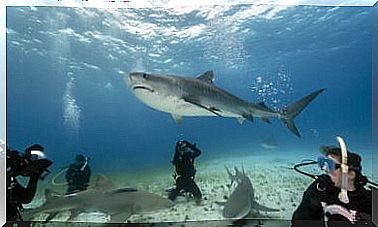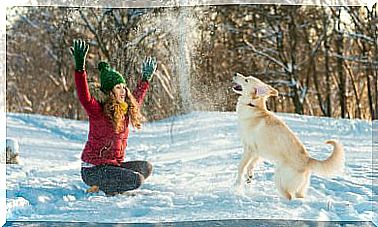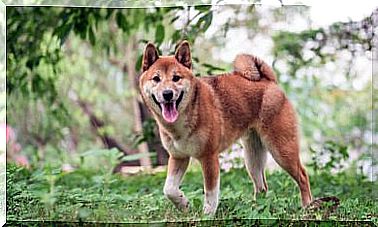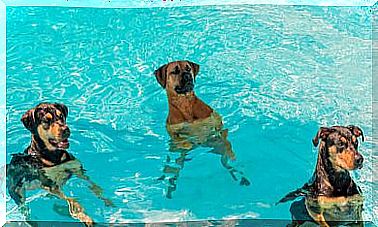5 Animals That Live In Lagoons
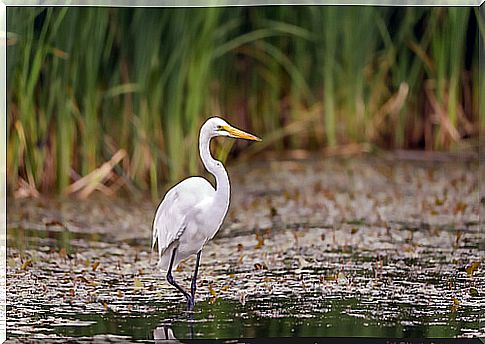
Freshwater reserves smaller than a lake are home to a large number of fauna. Formed in most cases by rainwater, these vulnerable ecosystems are home to birds, amphibians, insects, and reptiles. In this article we inform you about the animals that live in lagoons.
What are the animals that live in lagoons?
Often times, these water mirrors are seasonal and only last for a couple of weeks. During this period, the animals must do their best to survive and make the most of the resources offered. Regarding the flora, we can find a great variety of plants adapted to very humid environments: rush, cattail, water cabbage, etc.
Among the animals that live in lagoons we find:
1. Heron
It is one of the main inhabitants of the lagoons in different parts of the world – there are 60 subspecies in total – and, although it tends to have solitary habits, it is normal that during the breeding season it meets as a community in the vicinity of water and swampy areas. .
The heron –photo that opens this article– is a wading bird that can measure up to 85 centimeters tall, its plumage varies depending on the time of year and thanks to its long beak it captures amphibians and crustaceans in the water.
2. Dragonfly
This insect, whose scientific name is Anisoptera , has the peculiarity of being able to fold its wings –transparent– on the abdomen. In addition, the dragonfly is characterized by its multifaceted eyes and its elongated abdomen.
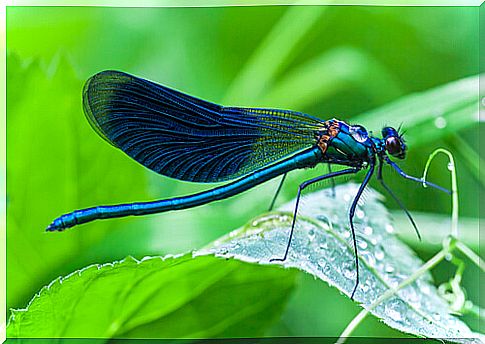
The natural habitat is made up of lakes, ponds, ponds, rivers, and marshy lands. There the females can lay their eggs (between the floating and emerging plants) and the nymphs can develop. In addition, mosquitoes, flies, bees, moths and butterflies get their food there.
3. Frog
If there are dragonflies and other insects in a place … there are also frogs! These stout-bodied, tailless amphibians have highly developed hind legs so they can jump very high and catch the prey they want. To that we must add its tongue, which stretches and has ‘glue’ to capture food without problems.

Most of the time the anurans are in fresh water, since they deposit their eggs there and this is where they feed. They can be seen ‘resting’ on the leaves or branches of some plants waiting for the perfect moment to feed.
4. Flamenco
This is another of the birds that live in lagoons, as well as in other types of water, as long as it is a shallow place. It lives on all continents – except Oceania – and among its peculiarities we can highlight its pink color and its long legs, like the other waders.
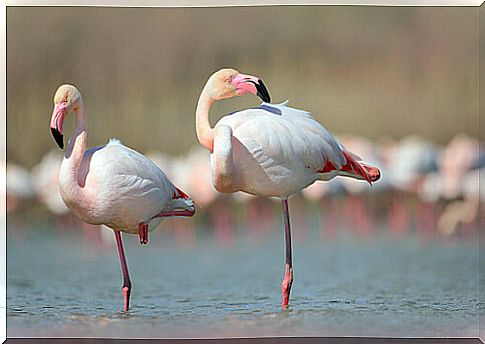
The flamingo makes nests with mud at the water’s edge and lays only one egg per season. As for their diet, their diet is based on algae and crustaceans (the color of their feathers depends on the latter). It has a more than interesting and curious system to ‘separate’ food from mud : its beak has a kind of filter between the jaws and the tongue.
5. Duck
To finish this list of animals that live in lagoons, we could not leave out one of the most famous and widespread birds in the world. Among all the species of ducks, the domestic one is the best adapted to small freshwater spaces, including ponds, ponds and swimming pools.
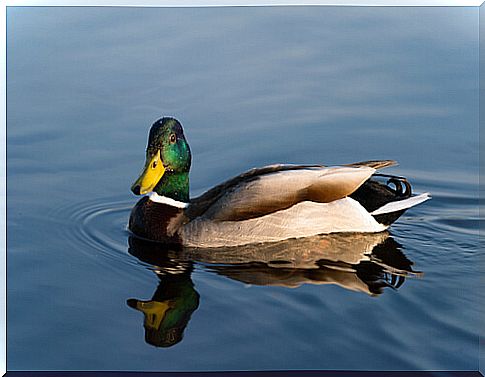
The duck weighs about four kilos and its plumage is completely white. The legs and the beak stand out, as they are orange. Chicks can be yellow or black. To nest it chooses dry sites a little away from water, but the rest of its life remains submerged in water. Their feathers have a special oil that prevents them from getting wet.

